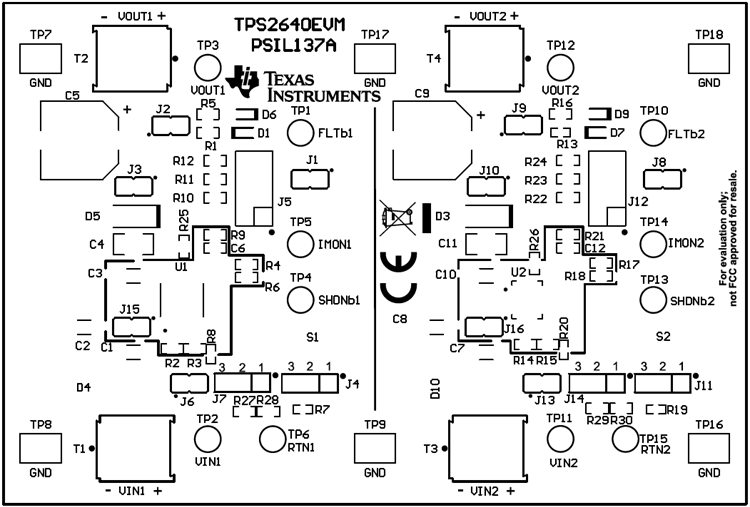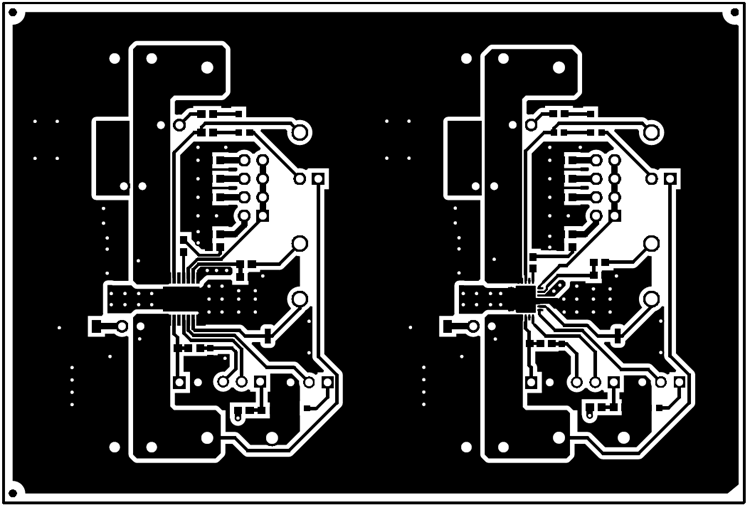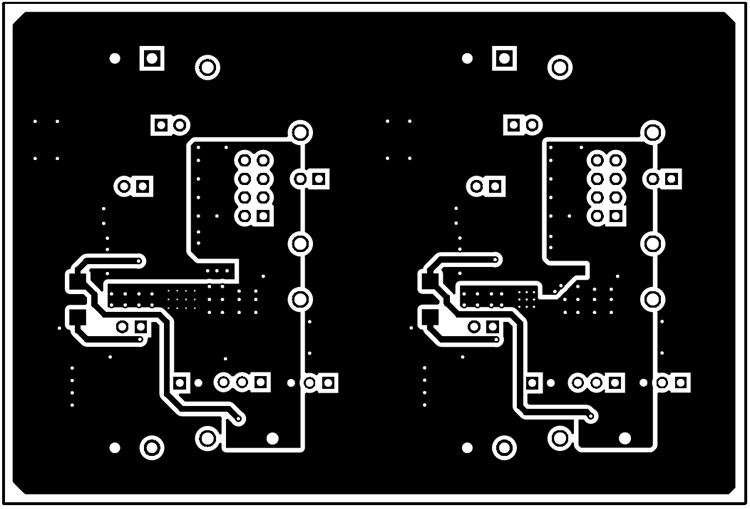SLVUBX9 October 2020 TPS2640
5.1 PCB Drawings
Figure 5-1 through Figure 5-3 show component placement and layout of the EVM.
 Figure 5-1 Top Side Placement.
Figure 5-1 Top Side Placement.  Figure 5-2 Top Layer.
Figure 5-2 Top Layer.  Figure 5-3 Bottom Layer.
Figure 5-3 Bottom Layer. SLVUBX9 October 2020 TPS2640
Figure 5-1 through Figure 5-3 show component placement and layout of the EVM.
 Figure 5-1 Top Side Placement.
Figure 5-1 Top Side Placement.  Figure 5-2 Top Layer.
Figure 5-2 Top Layer.  Figure 5-3 Bottom Layer.
Figure 5-3 Bottom Layer.